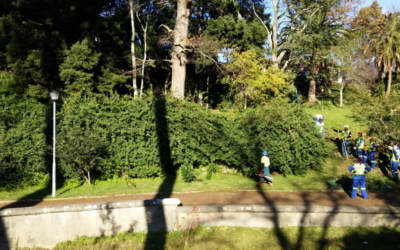Conor Eastment
The beginning of 2017 in Cape Town has certainly been dominated by drought. With dam levels reaching 33% for the area as of beginning March, and a potentially dry winter forecast, the ‘doomsday preppers’ are certainly in their element. Naturally, this is an extremely testing time for the population of water users – as we so often hear, the combination of a changing climate and urban growth makes this drought a serious challenge to manage in the future.
Everyone seems to be asking the same question: Where are we going to find more water? Well, while this most certainly is not a totally irrelevant question, I think that there are other questions which should be asked first. For example, why are we running out of water? How can we use the water which we do have more effectively? What is it about the current supply process that has brought us to this position?
By not questioning the reasons for our current predicament, we risk jumping the gun and repeating previous mistakes. A crisis provides an opportunity to take a step back and understand how we got to where we are. This needs to be done before investing in solutions which rest on assumptions and practices that led us astray in the first place.
The city’s response to the crisis has highlighted that as things stand, we do not have adequate infrastructure to continue status quo supply – something has to change. The change which has been prioritised by the authorities comes in the form of large scale, centralised infrastructure investment. The options being explored in the long run are that of desalination and aquifer tapping. These solutions apparently provide the answer to the question of “Where are we going to find more water?”. But unfortunately it is not always that simple.
Desalination is known to be extremely energy intensive (anyone want more power outages?) and costs exorbitant amounts of money (current costing for the city’s plant sits at 8 billion rand). Do we need to look further than the Sedgefield desalination plant which has been sitting dormant for years? The Table Mountain Group Aquifer is a non-renewable resource, and, like all resources in this category, should certainly be approached with finely calculated caution. Any over-extraction of this groundwater would lead to the loss of discharge into wetlands, streams, springs and other natural water bodies, posing a great threat to the Cape’s biodiversity and the multitude of eco-system services this provides.
Why are we running out? As a population, we simply don’t value water the way we ought. With large-scale supply schemes, consumers are so far removed from the resource and its life cycle that to them it becomes a commodified good – flowing out of the tap at a twist. There is no time and space in the current supply scheme for the water user to connect with the resource, and as a result, we only become aware of how valuable and sensitive it is when it is taken away from us. Therefore, the current drought-hype needs to be utilised as an opportunity to raise awareness of water and its plight.
By bringing the consumer closer to the resource via decentralised supply schemes, water’s true value may be realised. This is not going to happen if we continue to prioritise large-scale supply schemes such as desalination and aquifer tapping as the ultimate solution.
There are options for this decentralised supply scheme. Between 2 and 3 times more water falls on the City’s catchment than what is used for supply. We should be diverting the expertise and funding that is being used for the desalination and aquifer solutions and instead invest that into sustainable and decentralised options such as stormwater harvesting.
I suggest all of us, need to take a moment and listen to Cinderella and their wise words of not knowing what we have until its gone. *there are even some scenes of a full dam in the music video! Before it is too late, consumers and decision-makers alike need to utilise this challenge as an opportunity to rectify our mistakes. By prioritising centralised supply schemes, we are indeed jumping the gun and trying to solve the problem with the same solutions which brought us to this point in the first place.


